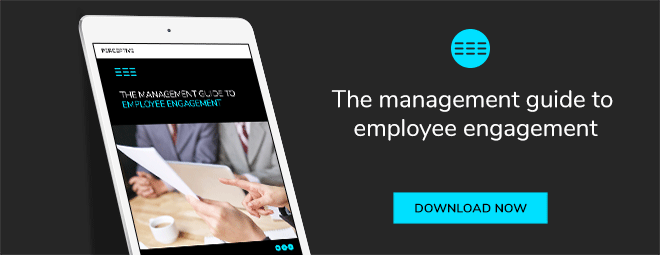A team that works well together and gels, both on and off the playing field, is one that achieves results. A high level of employee engagement is closely tied to business outcome, so creating a positive culture and a well-functioning team is imperative.

Related content: The Management Guide to Employee Engagement
1. Develop diversity within your team
Different points of view are a good thing—they provide new ways of looking at and resolving problems, as well as identifying issues and concerns that may not have occurred to current leadership.
This is good to keep in mind when hiring as it is all too easy for business owners to hire people that think and act exactly like themselves, assuming that this would profit their business. These are the business owners that miss out on the power of diversity.
Building a diverse team, consisting of people from different backgrounds, experiences and cultures creates an environment where you can benefit from different points of view.
Drive transformation in your business with our free guide Powerful CX strategies for business growth
2. The team always comes first
Companies who are looking for a powerfully creative culture must ensure that their staff is their top priority.
Many companies put customers first, which is a usual business strategy—but if your own nest isn’t in order, how will you be able to please your customers?
Businesses should look to Virgin's CEO Richard Branson, who has long campaigned on the idea that ensuring your team is happy is the key to ensuring your customers and shareholders are happy too.
Related content: 5 ways for leaders to create a positive culture at work
3. Group problem-solving
Problem-solving as a team-building activity is effective in developing a co-operative, welcoming culture. Companies naturally have staffing with a diverse range of skills and perspectives, both in and out of the workplace.
Putting these people together and making them work towards a common goal stimulates both creative new ways of dealing with existing problems, and new concepts—not to mention the opportunity to create long-lasting work relationships.
Related content: Maximising employee engagement in the workplace
4. Encourage free thinking (and speaking)
Diplomacy in the workplace is over-rated. Tact is important, but team members who are constantly worried about hurting the feelings of their colleagues are, ironically, hamstringing the company.
Instead, encourage your staff to voice what they think and how they feel. Asking hard questions of each other can be difficult to begin with, and managers should expect a level of defensiveness.
However, the payoff is a team that doesn't leave itself complacent as a result of refusing to challenge each other's thinking.
Related content: 5 practical ways to be an effective team leader
5. Don’t forget the fun factor
Forced fun is worse than no fun at all. Corporate culture has a poor reputation for being stuffy and artificially "fun"; indeed, the excitement of the mention of "party" quickly disappears once you put "office" in front of it.
The key is to allow for natural events and activities to flourish. Many offices have internal sports teams, others have shared hobbies and interest groups. Others have a day (often a Friday) where they let people kick back and relax with a beer and a chat for the last few hours of the work day.
Encouraging interaction works, but forcing it doesn't. Rather than thinking of set activities and events, many businesses instead create an open, welcoming environment where staff members create these activities naturally.
Bonus: The rules are. . . there are no rules
Forget the rules. Don’t worry, this won’t (always!) lead to anarchy, but again, would you really want a culture where everyone’s too scared of rules and regulations to think outside of the box? Having a playful work environment creates a level of trust and motivation where innovation flows more freely.
Related content: How to engage and retain your employees
If you want to learn more about boosting employee engagement, check out our free eBook below!
